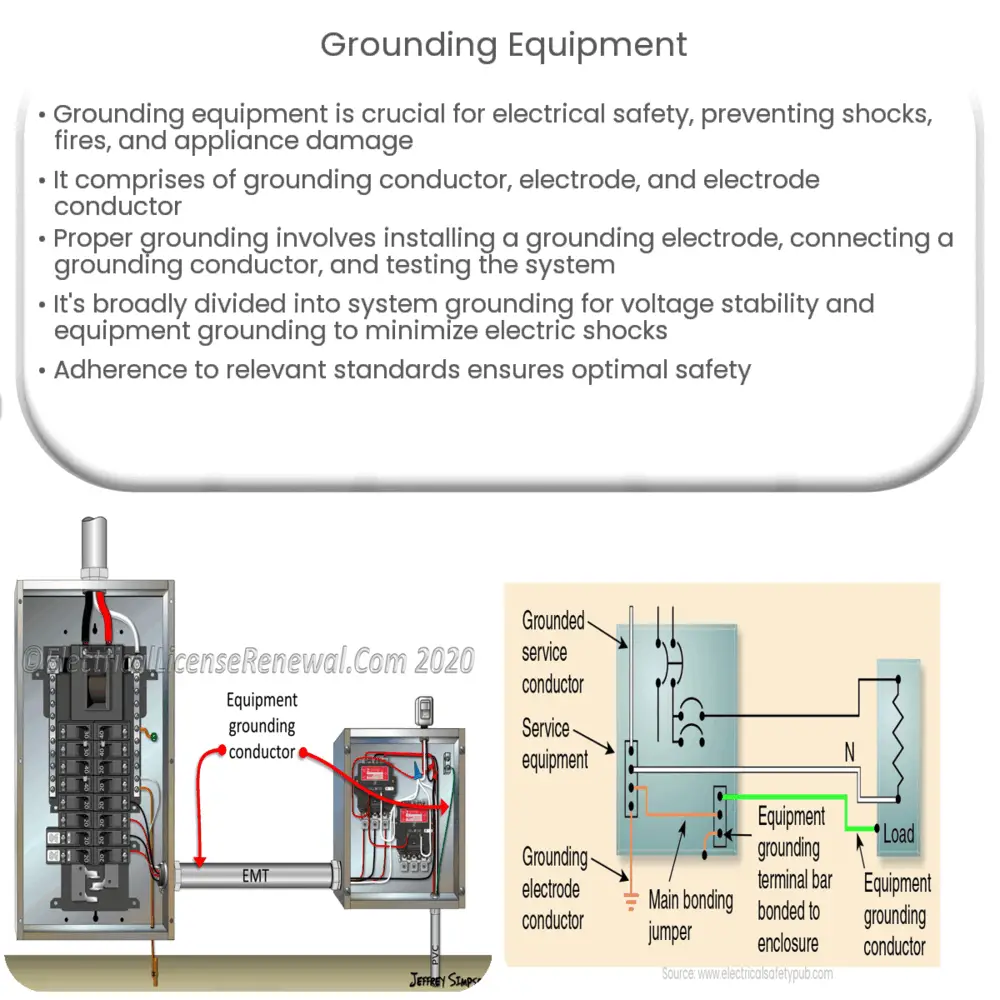Explore the importance of grounding equipment in electrical safety, its types, benefits, and adherence to standards in our detailed guide.

Introduction to Grounding Equipment
Electrical safety is paramount in any electrical installation, construction, or maintenance process. A critical component of this safety protocol is the grounding equipment, designed to protect both individuals and electrical systems from possible faults and damage. The grounding system provides a direct path for electrical energy to follow should a mishap occur, reducing the risk of electrical shock, electrical fires, and damage to appliances.
Significance of Grounding Equipment
Proper grounding plays a substantial role in our everyday safety. It creates an alternative path for electrical current to flow back to the ground in the event of a fault. Notably, it acts as a protective measure preventing severe consequences such as electrical fires or electric shocks that can be fatal.
Components of Grounding Equipment
- Grounding Conductor: This is a wire that connects the non-current-carrying parts of electrical equipment, such as the metal boxes and enclosures, to the ground.
- Grounding Electrode: This is a conductor embedded into the ground, providing a physical connection to the earth. The electrodes can be metallic rods, metallic plates, or a conductor encased in concrete.
- Grounding Electrode Conductor: This is a conductor connecting the grounding electrode and the equipment grounding conductor, or the grounded conductor of the electrical service. It forms a bridge between the ground and the electrical equipment.
The Grounding Process
At its most basic level, the grounding process involves three main steps:
- Installation of Grounding Electrode: This is typically a metal rod driven into the ground, establishing a connection with the earth. The rod must be of a specific length and diameter, and must be driven to a specified depth to ensure a good connection.
- Connection of Grounding Conductor: This wire is connected between the grounding electrode and the electrical equipment or system. It’s a crucial component that carries any fault current safely to the ground.
- Testing and Verification: After installation, the grounding system is tested to verify its integrity and effectiveness. This involves measuring the system’s resistance to ensure it meets specified standards.
Proper grounding equipment and its correct installation can mean the difference between a minor electrical fault and a major catastrophe. The importance of understanding and implementing grounding cannot be overstated.
Types of Grounding Equipment
In the broad category of grounding equipment, there are two primary types that are essential for overall safety and performance of an electrical system:
- System Grounding: In system grounding, one conductor of the electrical system, usually the neutral wire, is connected to the ground. This type of grounding is used primarily for power supply systems. It ensures voltage stability by preventing overvoltages in the system.
- Equipment Grounding: Equipment grounding ensures that all non-current-carrying metal parts in the system are grounded. This includes metal casings, enclosures, and frames of equipment. The goal of equipment grounding is to minimize the risk of electric shock by keeping all parts of the system at the same potential.
Benefits of Grounding Equipment
Using grounding equipment is not only a safety measure but also offers a range of benefits:
- It provides a path for electrical energy to dissipate safely in the event of a fault.
- It minimizes the risk of potentially fatal electric shocks.
- It helps to prevent damage to electrical appliances and equipment.
- It reduces the risk of electrical fires caused by faults.
Adherence to Standards and Codes
Grounding equipment installation is regulated by various national and international codes and standards, such as those provided by the National Electrical Code (NEC) in the United States or the International Electrotechnical Commission (IEC) globally. Adherence to these standards ensures that grounding systems are installed correctly, providing optimal safety.
Conclusion
In conclusion, grounding equipment plays a crucial role in ensuring the safety and stability of electrical systems. Whether in residential, commercial, or industrial settings, a well-installed grounding system can mean the difference between smooth operation and potential disaster. It is important for everyone dealing with electricity to understand the significance of grounding equipment, adhere to the relevant codes and standards, and make safety a top priority. We should never underestimate the importance of grounding as it forms the backbone of safe electrical usage and helps to protect us from the inherent dangers of electricity.

